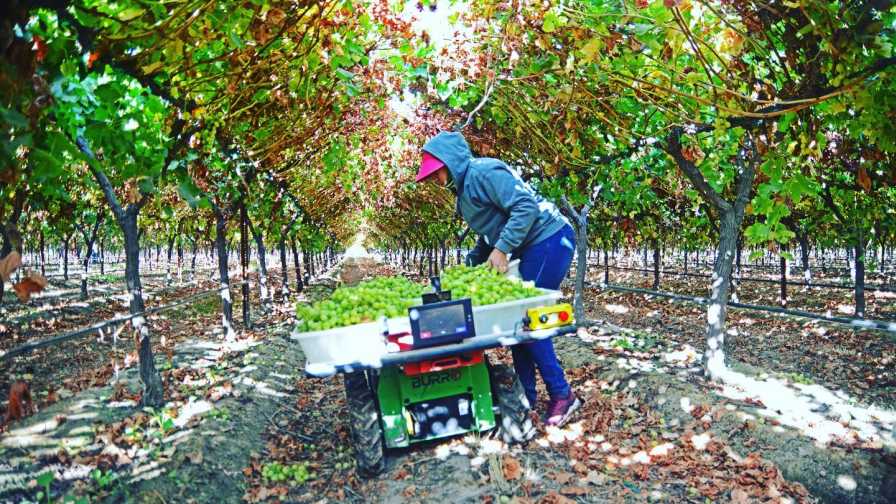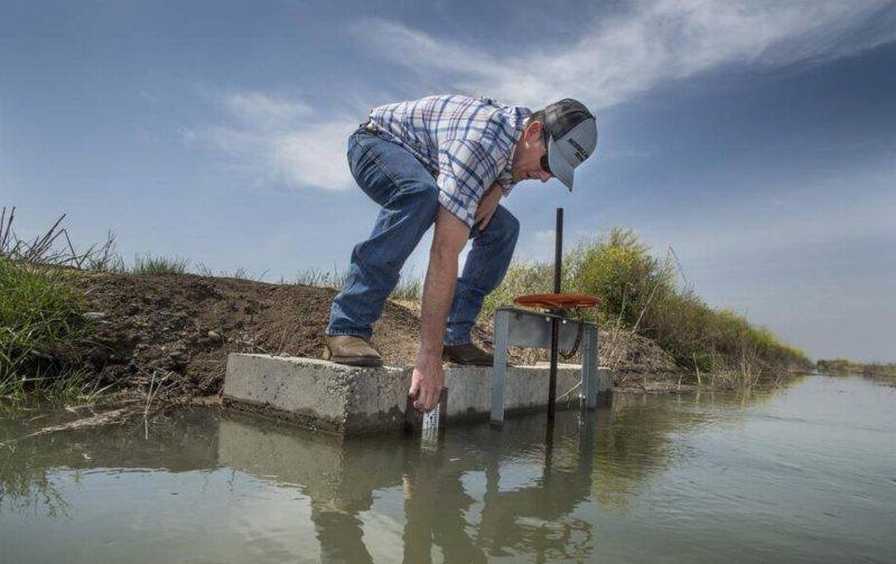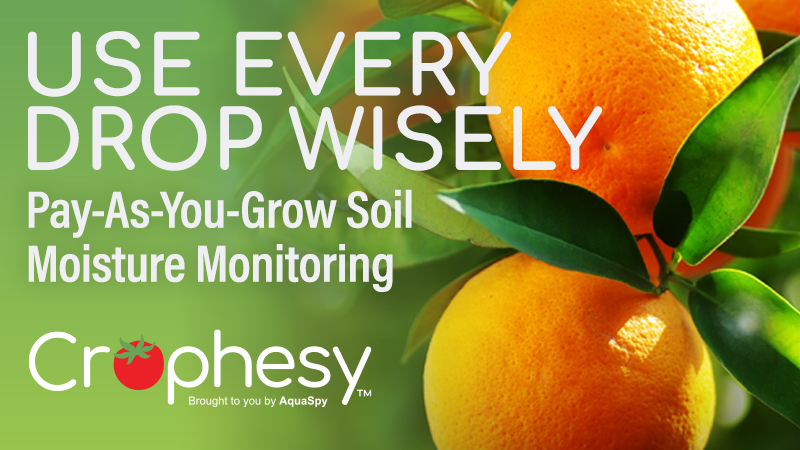Tech Provides Beacon of Hope for the Future of Ag
In an accelerating trend, a litany of regulations — many at the local and state level — are hitting our nation’s farmers, especially in the West. These regulations make it increasingly difficult to accomplish their noble goal of feeding the world.
Here are just a few examples of these restrictive policies:
- Rules that limit how much water can be used to irrigate crops
- Eliminating vital crop protection tools (before alternatives are developed)
- Laws that result in exorbitant labor costs and ultimately hurt the earnings potential of farmworkers
It’s evident support for farmers among policymakers across the country is eroding. And it’s taking a toll on the industry.
In 1935, the U.S. boasted 6.8 million farms. Today, just over 2 million farms are in operation. The number of farms that blanket our nation are dwindling at a steady rate — an unfortunate fact that is exacerbated by diminishing natural resources, rising foreign competition, and the onslaught of regulatory blows to agriculture.
Yet despite these challenges, farmers are still rising above it all in an effort to feed our growing population.
Prepare for a Great Leap Forward
The United Nations recently reported that the world’s population is slated to reach a staggering 8.5 billion by 2030. It will take a dramatic increase in food production to feed this many mouths. The critical question is: “Where will these gains be achieved?”
 Because of intense regulatory pressures, as well as the growing scarcity of resources — exhausted arable cropland, eroded soil, depleted aquifers, and urbanization — farmers are increasingly turning to innovation and technology to remain viable in the 21st century and beyond.
Because of intense regulatory pressures, as well as the growing scarcity of resources — exhausted arable cropland, eroded soil, depleted aquifers, and urbanization — farmers are increasingly turning to innovation and technology to remain viable in the 21st century and beyond.
Throughout history, increases in food production always have followed advances in agricultural practices, such as during the Second Agricultural Revolution between the mid-17th and late-19th centuries, and technology, such as during the Green Revolution beginning in the late 1960s.
We are in the early stages of yet another great leap forward in global food production, an agricultural technology (agtech) revolution that began just a few short years ago. Prior to 2013, investment in agtech was relatively flat. However, 2013 saw a 75% growth in investment, reaching $860 million, according to AgFunder. Agtech has continued to soar — receiving $16.9 billion in 2018 — and the year-over-year increase will only continue to escalate as farmers battle numerous ongoing challenges, including labor availability, food safety, and water scarcity.

Augean Robotics’ Burro can learn paths and retrace them autonomously, continuously conveying material back and forth.
Photo courtesy of Western Growers
How Tech Will Improve Labor
Agriculture has been at a labor deficit for more than a decade. The number of farmworkers migrating to the U.S. from Mexico has steadily dropped, and it is a well-established fact that Americans will not work in our fields, regardless of higher wages.
Absent an immigration solution that provides U.S. farms with access to a legal, stable supply of foreign workers, farmers and ag-related businesses are looking into ways to support mechanization and automation to help solve their labor woes.
Since launching our agtech incubator — the Western Growers (WG) Center for Innovation & Technology — in 2015, we have seen mechanization and automation technologies grow from their infancies to commercial viability.
We have startups in our center that are integrating computer vision and machine learning to build technologies ranging from autonomous tractors and weeders to strawberry-harvesting robots. These startups are working hand-in-hand with growers to refine their technologies, ensuring that the robots are both useable and affordable.
Augean Robotics, for example, used the funding they earned from last year’s WG/S2G Ventures AgSharks Pitch Competition to help launch a fleet of test robots. These “Burros” follow pickers and function as a virtual conveyor belt between pick points and collection points, allowing harvesters to pick continuously rather than wasting up to 20% to 30% of their time shuttling the produce around.
Today, the startup is working closely with table grape growers in the Central Valley to ensure the technology addresses their labor concerns. Augean Robotics expects Burros to be commercially available next season.
Food Safety Innovations
Although agriculture has faced several high-profile food contamination events in the past few years, there has been substantial progress in developing more advanced food safety systems throughout the industry.
For instance, WG has teamed with agtech startup iFoodDecisionSciences and tech leader Trimble HarvestMark to launch a new food safety risk management program called the Supply Chain Risk Management Solution.
This program uses cloud- and blockchain-enabled technology to reduce the number of food contamination outbreaks, substantially improving food safety and keeping consumers safe. The advanced technology will now allow stakeholders throughout the supply chain to easily narrow and identify the specific products that are and are not involved in a food safety event.
Collaboration is key. Through collaboration, more multi-layered technology initiatives will start to be developed, which will ultimately benefit everyone from the grower to the consumer.

SWIIM helps growers track their application and consumption to partly transfer their saved water to other users.
Photo courtesy of Western Growers
Stretching Water Use Through Tech
Managing water is one of the most complex challenges farmers face. This is especially true in California, where burdensome water requirements are continuously coming down the pipeline.
Still recouping from the detrimental impacts of a multi-year drought, California farmers now have to deal with new limitations on groundwater pumping. The Sustainable Groundwater Management Act (SGMA), which goes into effect in January 2020, will restrict and reduce groundwater access to farmers — most notably in San Joaquin Valley.
However, new tools are being developed and quickly refined to help farmers untangle these water challenges. Answering SGMA’s call for a more holistic approach to water management and supply, agtech companies are delivering easy-to-use solutions for efficient water management.
One of the most promising software platforms currently on the market comes from Colorado-based SWIIM (Sustainable Water and Innovative Irrigation Management) Systems. SWIIM offers a suite of software packages and services that allows agricultural operations to conserve water while increasing the potential for income. By gathering and interpreting real-time data, the SWIIM platform enables farmers to make concurrent irrigation choices, all while optimizing water rights and allowing for water trading within local groundwater basins — something that will be crucial when SGMA is fully implemented.
At a time when agriculture is facing increasing regulatory and environmental challenges, technology provides a beacon of hope for the future of farming. Farmers have always sought ways to adapt to a changing world and producing a steady supply of food for an ever-growing population. Now, their efforts are being supplemented with technological innovations from agtech startups and entrepreneurs, and together, they will ensure the long-term viability of the agricultural industry.










